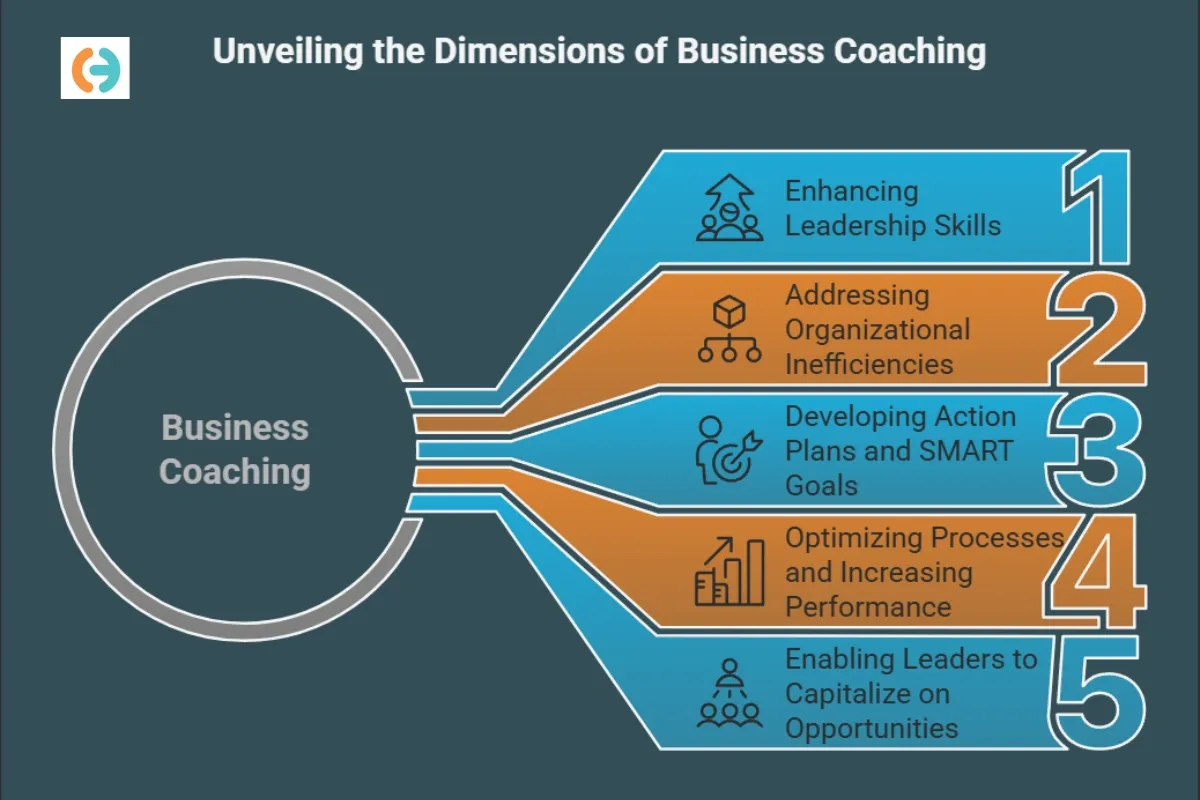Executive Coaching Success: Behind the Scenes of Million-Dollar Career Jumps
 Executive coaching delivers real results with impressive numbers to back it up. Studies show an extraordinary 788% return on investment. These numbers explain why professionals choose coaching to advance their careers.
Executive coaching delivers real results with impressive numbers to back it up. Studies show an extraordinary 788% return on investment. These numbers explain why professionals choose coaching to advance their careers.
Success stories from executive coaching often sound too good to be true. Our clients have secured director positions within six months when others said it would take over a year. On top of that, small business owners who received executive success coaching nearly tripled their businesses in just one year. A professional boosted their annual income by $30,000 by doing this with their coach’s guidance.
Executive coaching creates a powerful partnership between experienced professionals and dedicated coaches. Regular check-ins, performance reviews, and constructive feedback help track progress and lead to major career breakthroughs. This piece takes you behind the scenes of these million-dollar career advances and shows what makes these coaching relationships so effective.
Real Stories of Million-Dollar Career Jumps

Image Source: Alamy
Million-dollar opportunities emerge from career challenges through executive coaching. These stories show how leaders turned their struggles into remarkable success.
From burnout to boardroom: a CEO’s transformation
Burnout can derail even the brightest executive careers. Media mogul Arianna Huffington’s story stands out. She collapsed from exhaustion in 2007 and broke her cheekbone after working 18-hour days to build her company. This wake-up call led her to redefine success beyond work. She later launched Thrive Global to curb burnout.
Buffer CEO Joel Gascoigne’s story resonates similarly. Massive startup stress pushed him to take a six-week sabbatical from his company. His return brought revolutionary changes to leadership. He introduced mandatory fully paid vacations (6–12 weeks every 5 years) and gave employees free mental health app access. These changes helped his recovery and built a more resilient company culture.
Executive coaching offers a well-laid-out path from burnout to renewed leadership. Leaders don’t just recover—they become stronger and wiser through an integrated approach that combines forward movement with deeper exploration of why perfectionism and unresolved stress happen.
How a VP doubled their salary through coaching
Executive success coaching’s financial rewards can be substantial. A business owner who generated INR 126.57M annually doubled their business within a year of coaching while beating impostor syndrome.
Another executive’s story proves coaching’s value. After two unsuccessful years seeking promotion, they secured it within 6 months of coaching with a INR 4219.02K annual salary increase. The results can be even more dramatic. A middle-management executive landed a prominent role with over INR 16876.09K more in annual income after 5 months of coaching. They had searched for a new leadership position for eighteen months.
Notwithstanding that, coaching-guided strategic career moves can dramatically shift career paths. One client’s salary grew 88% over six years while their colleague’s increased 50%—a 76% financial advantage through better career planning.
Breaking barriers: a woman leader’s rise to C-suite
Women leaders face unique challenges. They make up more than half the workforce, yet only 86 women become managers for every 100 men. Women hold just 20% of corporate board seats globally at the highest levels.
C-suite women often face resistance, isolation, and self-doubt. One executive coach points out that “new C-suite leaders often feel stuck or unsupported” and need help recognizing and overcoming “internal blockers”.
Executive coaching helps women leaders in several vital ways:
-
Building self-awareness and authentic leadership style
-
Identifying and magnifying unique strengths rather than fixating on weaknesses
-
Developing strategies to direct gender biases in leadership perception
Executive coaching addresses the whole person beyond career advancement. Coaches help executives line up their career goals with personal values. They build resilience against setbacks and develop green leadership practices. This prevents future burnout while maximizing their effect.
The outcome? Leaders achieve million-dollar career jumps and find greater fulfillment and purpose in their professional lives.
What Makes Executive Coaching So Effective?

Image Source: LearnWorlds
Executive coaching runs on three basic pillars that revolutionize results. Personal growth paths emerge through structured goal-setting, continuous feedback loops, and emotional intelligence development, unlike generic leadership training. This combination builds a powerful framework for professional transformation.
Personalized goal setting and accountability
The highly individualized approach to goal setting and strong accountability mechanisms make executive coaching unique. Leaders work with coaches to establish SMART goals—Specific, Measurable, Achievable, Relevant, and Time-bound—which creates clear development paths. This well-laid-out framework keeps coaching focused and influential, rather than becoming an aimless conversation.
Experienced coach Lorraine Wiseman explains coaching as a transformation process that “leads leaders to their own solutions” instead of prescribing generic approaches. The goals set during coaching sessions line up with both organizational objectives and the executive’s personal development needs, which creates a powerful dual impact.
Accountability plays a vital role. One coach points out, “Without accountability, even the most insightful coaching sessions can lead to great ideas that never turn into results”. Coaches become the “voice in the head” that checks on executives and offers support while ensuring they take responsibility for their actions. Support combined with responsibility turns intentions into real outcomes.
The power of feedback and reflection
Reality checks come through feedback that shows the gaps between how executives see themselves and how others see them. This difference often marks the first step toward lasting behavioral change. Coaches give constructive feedback with specific, balanced, and applicable information in a safe, judgment-free environment.
Neural networks activate during reflection and help form connections between seemingly unrelated concepts, which encourages creative problem-solving. Leaders who regularly reflect show greater adaptability and learning agility compared to those who only rely on experience.
Different reflection methods—from journaling and peer reflection circles to mindfulness practices—help boost self-awareness. Reflection works as an ongoing process that tracks progress. This continuous feedback loop shows executives their positive changes and areas that need more work.
Building emotional intelligence and resilience
Emotional intelligence (EI) has become a coaching superpower, not just a soft skill. In fact, TalentSmart shows that 58% of job success comes from high EI. Leaders develop key EI components through coaching:
-
Self-awareness of emotional triggers and patterns
-
Self-regulation of reactions during high-pressure situations
-
Empathy and perspective-taking with team members
-
Better communication that reads between the lines
Coaches help executives spot emotional triggers, behavioral patterns, and blind spots through assessments and structured conversations. Leaders learn how their emotions affect others—the foundation of emotional intelligence.
Today’s uncertain business world demands resilience. Stress management techniques from coaches help leaders stay composed under pressure. They guide executives through vulnerability and change, creating space for difficult emotions without judgment or rushing to “fix” things. This support helps leaders develop what executive coach Hitendra Wadhwa calls “emotional agility”—knowing how to guide through storms with clarity and grace.
These three powerful mechanisms—personalized goal setting with accountability, continuous feedback loops, and emotional intelligence development—create lasting transformation that reaches beyond the individual and positively shapes entire organizations.
Key Lessons from Executive Coaching Success Stories
Million-dollar career transformations reveal critical patterns for success. These patterns highlight three fundamental lessons that are the foundations of executive coaching success.
Self-awareness is the foundation of growth
Self-awareness stands as the life-blood of effective leadership. A detailed study showed that self-aware executives know how to identify and manage their biases and emotions. This helps them make objective and effective decisions. Their empathy grows as they work on self-awareness – both skills develop together.
Real business outcomes emerge from self-awareness, beyond just reflection. Leaders who know themselves better build stronger relationships with employees, peers, and stakeholders. They show authenticity and are willing to listen. These leaders encourage organizational cultures built on openness, honesty, and accountability.
Communication style can make or break leadership
Leadership effectiveness depends heavily on communication. A groundbreaking study showed that communication styles explained 69% of variance in charismatic leadership and 79% in human-oriented leadership. The way leaders communicate significantly affects their ability to inspire and motivate teams.
Effective leadership communication covers several key dimensions:
-
Active listening – focusing on understanding rather than responding builds trust and reveals employee motivations
-
Transparency – openly sharing information about goals and challenges enables employees to take calculated risks and invent
-
Adaptability – tailoring communication to different team members’ needs and styles
Aligning personal values with business goals
Successful executive coaching helps leaders line up their personal values with business objectives. Job satisfaction and productivity soar when this alignment happens. One expert notes, “When personal values match the organization’s culture, job satisfaction soars and productivity improves”.
Organizations benefit powerfully from this alignment. Shared values become the foundation of team success. Communication flows naturally even in challenging situations when team members value honesty and openness. Companies with high value alignment show higher engagement, stronger collaboration, and greater resilience during difficulties.
Self-knowledge starts the process for leaders seeking this alignment. Understanding your personal values clarifies what drives you. This enables intentional contributions to your team and organization. You can shape your business to support your life and values instead of letting your business control your life.
The Ripple Effect on Teams and Organizations

Image Source: Simply.Coach
Executive coaching creates waves of positive change that ripple through entire organizations. Leaders who transform help their teams evolve, which triggers improvements across many areas.
Improved team dynamics and collaboration
Executive coaching boosts team unity by building better communication skills like active listening and constructive feedback. Coaches help executives create psychological safety in their teams. This builds trust and openness that become foundations for successful teamwork. These coached leaders learn to run team activities that boost collaboration and deepen interpersonal relationships.
Better communication helps leaders handle conflicts effectively. Executive coaching equips leaders with courage and compassion to manage disagreements, which creates a more resilient team culture. Teams led by coached executives show higher engagement levels and work together more smoothly with less friction.
Higher employee engagement and retention
Companies that have well-laid-out leadership development programs see a remarkable 25% reduction in turnover rates. Leaders develop skills through coaching that help keep employees around. They create open communication channels and encourage teamwork. This results in 22% higher retention rates as employees feel supported with clear growth opportunities.
Studies show 72% of people see a strong connection between coaching and better engagement at all leadership levels. LinkedIn’s data reveals that 94% of employees stick around longer in companies that invest in their growth. These investments boost productivity and team morale.
Creating a culture of continuous development
Leaders with coaching experience build an environment of ongoing learning—a vital factor in keeping employees. This approach matches organizations’ changing needs and employees’ growing roles. Employees feel equipped to learn new skills, create solutions, and stay ahead in their field.
Workhuman and Gallup research shows that employees who feel supported in skill development are 8x more likely to see growth opportunities in their current company. They’re also 47% less likely to look for jobs elsewhere. These leaders encourage environments where curiosity thrives and knowledge flows freely. They create growth paths that employees truly value.
What Sets Successful Coaching Partnerships Apart
Executive coaching success depends on three key elements that set outstanding partnerships apart from average ones. These elements build the foundations for transformative results that justify the investment in coaching.
Trust and chemistry between coach and executive
The success of coaching partnerships depends on the natural connection between coach and client. Research shows that clients’ readiness for coaching and trust in their executive coach lead to better personal skill development and work performance. Coaches must create a space where executives can share their vulnerabilities openly. Leaders need this psychological safety to test ideas and grow without judgment. Leaders often decide if they can work with a coach based on this chemistry before setting any goals.
Clear expectations and measurable outcomes
Coaching sessions need well-defined objectives to work and create real change. Strong partnerships need a well-laid-out process that includes assessment, goal setting, action steps, measurement, evaluation, and feedback. Goals should match organizational needs while helping personal growth. Regular progress reviews help keep work on track and allow adjustments when needed.
Organizational support and long-term commitment
Organizations shape coaching success through their support and involvement. Coaching tied to organizational priorities builds confidence in senior leaders. The most meaningful results happen when leaders and coaches have their organization’s support—this creates room for practicing new skills. Successful partnerships see coaching as a strategic investment rather than a quick solution.
Conclusion
Executive coaching serves as a powerful driver of career transformation, with proven results across industries. This piece showcases how coaching partnerships lead to extraordinary career growth. The results range from million-dollar salary increases to C-suite promotions that would typically take much longer.
These remarkable success stories stem from a well-laid-out approach built on three core pillars. Individual-specific goal-setting combined with strict accountability will give a clear path to progress. Executives bridge perception gaps between their self-image and reality through continuous feedback and reflection. Leaders also gain vital skills to navigate complex workplace dynamics by developing their emotional intelligence.
Success stories from coaching relationships show that self-awareness is the life-blood of leadership growth. A leader’s communication style plays a vital role and accounts for nearly 70% of charismatic leadership variance. Leaders who match their personal values with business goals create lasting motivation and authentic presence.
The benefits of executive coaching ripple throughout organizations. Teams work better together under coached leadership. Companies with structured leadership development see higher employee involvement and their turnover rates drop by up to 25%. Coached executives often build cultures where continuous learning becomes part of company DNA.
Great coaching partnerships don’t just happen. They need strong trust between coach and executive, clear expectations with measurable results, and company support to apply new skills. These elements working together deliver that exceptional 788% return on investment mentioned earlier.
Executive coaching goes beyond career advancement. It changes how leaders present themselves at work and home. The million-dollar career advances mentioned here show more than financial gains. They reflect deeper satisfaction, eco-friendly leadership practices, and lasting organizational effects.
Key Takeaways
Executive coaching delivers transformative career results with an impressive 788% ROI, creating million-dollar opportunities through structured, personalized development approaches.
• Self-awareness drives success: Leaders who develop deep self-knowledge make better decisions, build stronger relationships, and create authentic leadership presence that accelerates career growth.
• Communication style determines leadership impact: How executives communicate explains 69% of charismatic leadership variance, making communication skills crucial for career advancement.
• Trust and accountability create transformation: Successful coaching partnerships require psychological safety, clear measurable goals, and organizational support to achieve sustainable results.
• Coaching creates organizational ripple effects: Executive development reduces turnover by 25%, improves team dynamics, and establishes cultures of continuous learning that benefit entire companies.
• Alignment amplifies results: When personal values match business objectives, job satisfaction soars and productivity improves, creating sustainable career momentum.
The most successful executives don’t just focus on individual advancement—they leverage coaching to develop emotional intelligence, build resilient leadership practices, and create positive impact that extends throughout their organizations, ultimately justifying the significant investment in their professional development.
